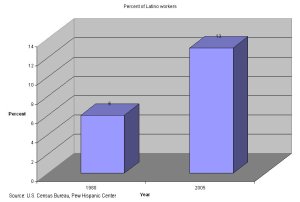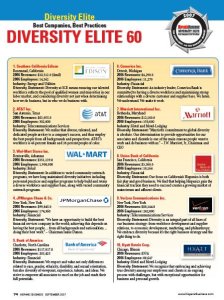Posted by Elena del Valle on September 28, 2007

RBD is Anahi, Dulce, Maite, Alfonso, Christian and Christopher
Photo: Terra
Latin pop band RBD, MTV Tr3s and Roptus joined efforts to promote the band’s “Tour Celestial 2007” in the United States. RBD’s U.S. tour, produced by Roptus, kicked off September 15, 2007 in San Juan, Puerto Rico and will end November 10 in Miami. After Puerto Rico it’s scheduled to stop in Chicago, Houston, San Antonio, Dallas, Phoenix, Sacramento, San Jose, Fresno, Los Angeles, and San Diego before closing in Miami.
On September 20, RBD was scheduled to perform its single “Besame Sin Miedo” and a surprise track during a special appearance on “Mi TRL.” On October 9, they will appear in “Tour-ismo,” sharing with fans an intimate side of RBD as the group members explore New Mexico, shop for vintage clothing, meet with Native Americans who explain the city’s celestial spirit, and ride low-riders before performing in concert.
“We are thrilled to bring MTV Tr3s viewers these unique connections to RBD,” said Michael Galbe, vice president, Music and Talent, MTV Tr3s. “Our sponsorship of RBD’s ‘Tour Celestial 2007’ connects MTV Tr3s viewers with one of the biggest selling Latin acts of the past several years and gives our viewers unique and exclusive access to RBD from exciting new programming to texting to live mega events.”
“Emotional Branding: How to capture the heart and mind of the Hispanic consumer” audio recording


“Emotional Branding” was recorded January 2007 during the Strategic Research Institute 13th Annual Blockbuster Marketing to U.S. Hispanic and Latin America conference in Miami, Florida. Receive a free downloadable copy by completing our Visitor Survey.
Click here for your free copy of Emotional Branding
RBD is Anahi, Dulce, Maite, Alfonso, Christian and Christopher. The group was born in 2004 from Mexican soap opera “Rebelde.” According to promotional materials, before arriving in the U.S., “Tour Celestial 2007” sold out venues in Brazil, Ecuador, Spain, Romania and Japan.
MTV Tr3s is a television network dedicated to bicultural Latino youth with a fusion of American and Latino music, cultures, lifestyles and languages. Music programming is at the core of MTV Tr3s and the channel features popular performers, emerging artists and new sounds. In addition to music programming, MTV Tr3s also features lifestyle series, news, and documentaries.
Roptus is an international marketing and concert production company that specializes in live entertainment marketing events for the Latin market. Roptus operates in 14 countries. Properties include the RBD 2006 and 2007 world tours, and active divisions in soccer and theater events in Los Angeles and Hollywood, California.
Posted by Elena del Valle on September 27, 2007
By Elena del Valle, MBA
Principal, LNA World Communications

Elena del Valle, MBA, principal, LNA World Communications
Photo: Cristian Lazzari
Did you ever wonder what you said or did to annoy a Hispanic media representative? Why the story you were working on went to a competitor and your company was mentioned in a lesser light or, worse yet, ignored completely by Hispanic media? As you’re sitting at your desk in the aftermath of the proverbial storm wondering what went wrong consider some sure fire ways to be left out in the future.
Read the complete article Five tips to ensure Hispanic media don’t cover your story
“Latino Media and Hispanic Media Training” audio recording


Presenters Federico Subervi, Ph.D. and Elena del Valle, MBA
Find out
• About the hundreds of Latino media
• Who are the major Hispanic media
• Type of media outlets they represent
• Languages in which they are produced
• Programming and content they offer
• Hispanic media geographic reach
• Hispanic media challenges
Click here for information on Latino Media and Hispanic Media Training
Posted by Elena del Valle on September 26, 2007

Click on image to enlarge
The number of Latino foreign workers and their earning ability increased over the last ten years. While foreign born workers represented 7 percent of the labor pool in 1980, by 2005, they represented 15 percent of workers. Latinos accounted for 13 percent of the total labor force in 2005, up from 6 percent in 1980.
At the same time, there were 1.2 million more Latino workers in 2005 than in 1995. Not only did the percent of Latinos in the labor force increase and the absolute number of Hispanic workers shoot up, their earning capacity improved.
According to a recently published report by the Pew Hispanic Center, foreign born Latinos earned more money per hour in 2005 than they did ten years earlier. Newly arrived Hispanics between those years also fared better, according to Rakesh Kochhar, associate director for Research, Pew Hispanic Center.
Target Latinos effectively by anticipating changes in the market with
“Hispanic Projections with 2007-08 update” audio recording

Presenter Roger Selbert, Ph.D.
Find out
- About Latino buying power growth in the future
- How Latino market growth compares with other markets in the U.S.
- What drives the rise of Latino economic clout
- Who should target the Latino market
- What is the size of the Hispanic affluent market
- If the luxury Latino market is growing
Stay ahead of your competion with “Hispanic Projections”
Kochhar concluded this is due to the arrival of better educated Latinos more likely to become employed in construction than in agriculture. At the same time that wage earning capacity of Latinos escalated to the middle of the range from the low end, wages for Asians jumped to the high end.The Pew report was based on the Census Bureau Current Population Survey, a monthly survey of 60,000 families. The report did not distinguish between documented and undocumented immigrants or the earning capacity of each group.
The Pew Hispanic Center, an initiative of the Pew Research Center, is a non-partisan, non-advocacy research organization based in Washington, D.C. The Pew Hispanic Center is funded by The Pew Charitable Trusts.
Posted by Elena del Valle on September 25, 2007

Click on image to enlarge
Photo: Hispanic Business magazine
In its September issue Hispanic Business magazine identifies large companies with policies friendly to Latinos and minorites in a special section, “Diversity Elite 60.” The magazine’s staff used more than 30 variables to measure the commitment of top Fortune 1,000 companies, American subsidiaries of Global 500 companies, and large U.S. public and private companies to Hispanic hiring, promotion, marketing, philanthropy, and supplier diversity.
As part of the listing process and following self imposed privacy guidelines, the magazine only disclosed information that is already publicly available. The final directory lists the top 60 companies, based on a weighted processing of company data conducted by HispanTelligence, the research arm of Hispanic Business Inc. Tables illustrating the cumulative data, including individual company quartile scores, accompany the list.
Information provided by magazine representatives indicates in making their selections they considered Hispanic and other minority representation on the board of directors and at the executive level; the company’s efforts to hire minorities; their attempts to support, retain, and promote Hispanic and other minority employees; marketing and advertising efforts targeting Hispanic consumers, as well as philanthropic or community services for minority groups; and supplier diversity programs. There is no indication of the weight given to each category or how many years of data were considered.
“Best in Class Hispanic Strategies” audio recording


Presenters Carlos Santiago and Derene Allen
-
Find out what makes 25 percent of the top 500 Hispanic market advertisers out perform the remaining companies
-
Discover what questions to ask, steps to take to be a Best in Class company
Click here to buy “Best in Class Hispanic Strategies” audio recording
“While I can’t disclose the weighting for each question in the survey, I can tell you that 33 of the 60 companies in the list reported having at least one Hispanic board member,” said a Hispanic Business magazine representative.
The top ten choices of the magazine’s editor’s this year are Southern California Edison, AT&T, Wal-Mart Stores, JPMorgan Chase, Bank of America, Comerica, Marriott International, Union Bank of California; Verizon Communications; and Hyatt Hotels Corporation.
Hispanic Business Inc. publishes articles about research, trends and the growth of the U.S. Hispanic consumer market and the Hispanic enterprise and professional sectors.
Hispanic Marketing and Public Relations Understanding and Targeting America’s Largest Minority book

“A must resource for practitioners/professionals expecting to reach US Hispanics; also valuable for college programs in marketing, public relations and communications. Highly recommended.”
Choice magazine
Click here for information on the Hispanic Marketing & Public Relations books
Posted by Elena del Valle on September 24, 2007

Miguel Gomez Winebrenner, senior consultant, Cheskin
Photo: Miguel Gomez Winebrenner
A podcast interview with Miguel Gomez Winebrenner, senior consultant, Cheskin is available in the Podcast Section of Hispanic Marketing & Public Relations, HispanicMPR.com. During the podcast, Miguel discusses his chapter on segmentation by level of acculturation from the Hispanic Marketing & Public Relations book with Elena del Valle, host of the HispanicMPR.com podcast.
Miguel consults with companies to assess market opportunities, help design ways in which to enhance customer experience, and guide innovation in a way that is meaningful to consumers. After graduating with Honors in Economics from the University of Iowa, he worked for Yankelovich in Latin America, where he contributed to multi-phase research projects.
In 2000, Miguel returned to the United States to work for C&R Research in Chicago, with an emphasis on cable, TV and telecommunications. He has worked with companies across several verticals including financial services, consumer packaged goods, quick service restaurant, cable TV and telecommunications, entertainment, healthcare, and health and beauty aids.
Read Miguel’s chapters on “Qualitative and Quantitative Research Strategies” and “Segmentation by Level of Acculturation,” in
Hispanic Marketing and Public Relations book

Click here for more about Hispanic Marketing & Public Relations
He is a member of the National Association for Multiethnicity in Communications (NAMIC) and the Cable and Telecommunications Association for Marketing (CTAM). He is immediate past president and on the Board of Directors of NAMIC South Florida, and is a member of the NAMIC National Multicultural Committee.
His articles have been published in Marketing News, BrandWeek, Restaurant Business, Time, Multichannel News, Diversity Inc, and Cable Advertising Bureau. He wrote the chapters on “Qualitative and Quantitative Research Strategies” and “Segmentation by Level of Acculturation” in the Hispanic Marketing and Public Relations book.
To listen to the interview, scroll down until you see “Podcast” on the right hand side, then select “HMPR Miguel Gomez Winebrenner,” click on the play button below or download the MP3 file to your iPod or MP3 player to listen on the go, in your car or at home. To download it, click on the arrow of the recording you wish to copy and save it to disk. The podcast will remain listed in the September 2007 section of the podcast archive.
“Segmentation by Level of Acculturation” audio recording

Presenter Miguel Gomez Winebrenner
Discusses
-
Assimilation versus acculturation
-
Factors that affect Latino acculturation
-
How to know if someone is acculturated
-
Number of years necessary for acculturation
-
Effects of immigration debate on acculturation
-
Three main ways of segmenting Latinos
Click here for details about “Segmentation by Level of Acculturation”
Click the button to hear the podcast:
Posted by Elena del Valle on September 21, 2007

Actress Angélica Vale and Ronald McDonald aboard the Museo de la Música McDonald’s
Photos: Museo de la Musica McDonald’s
In an effort to win Latino hearts with music, McDonald’s recently announced a Latin Grammy oriented campaign including a Latin music museum on wheels. The other elements of the campaign are Latin Grammy Street Parties with performances from Latin music artists; and a national sweepstakes for a trip to the music awards ceremony in Las Vegas.
The Museo de la Musica McDonald’s, a 53 foot long and 23 foot wide truck filled with Latin music memorabilia from 38 artists, will be touring seven United States cities: Albuquerque, Phoenix, Chicago, Los Angeles, New York, Dallas and the City of Hialeah near Miami. The program began with the Museo launching September 6, 2007 in Los Angeles and will tour from September 9 to October 28, 2007.
Some of the memorabilia featured in the vehicle, which took a month and a half to build, include Selena’s iconic purple jumpsuit and her microphone; a wig, dress and heels that once belonged to Celia Cruz; a guitar autographed by Mana; a dress worn by Graciela Beltran during White House festivities; and the bottle of Remy Martin featured on Johnny Pacheco’s album “Champ.” There are also items from Tito Puente, El Gran Combo, Juanes, Maná, Alejandro Fernández, Ramon Ayala, Héctor Lavoe, Israel “Cachao” Lopez, Pitbull and Santana.
Find out which Latino markets are booming with
“The Next Step: Secondary Latino Markets” audio recording

Presenter Dora O. Tovar, MPA
Click here for information on Secondary Latino Markets
Once on site, a hydraulic system enables the vehicle to expand in width to simulate a regular museum experience. Inside the truck, plasma screens feature a video loop of Latin music genres like regional Mexican, Tex-Mex, salsa, merengue, pop, bachata, and rock.According to promotional materials, the tour will include a Gibson Guitar POD Station with musical demonstrations, and a scholarship station where visitors can obtain information about the Ronald McDonald House Charities and HACER Scholarship Program.
“This year, McDonald’s will celebrate the 8th Annual Latin Grammy’s in a big way by bringing all the excitement right to our fans in our Hispanic communities,” said Cristina Vilella, director of Marketing, McDonald’s USA. “Our sponsorship role this year continues our long history of supporting Latin music and providing quality live music events for our customer’s enjoyment.”

Exterior of the Museo de la Música McDonald’s
“The Latin Recording Academy is thrilled to have McDonald’s as a presenting sponsor of the 8th Annual Latin Grammy Awards, and recognizes its efforts to support initiatives that bring Latin music to the general public through the Latin Grammy Street Parties, the McDonald’s Museo de la Música and the 8th Annual McDonald’s Latin Grammy Awards Sweepstakes,” said Gabriel Abaroa, president of the Latin Recording Academy.
The McDonald’s 8th Annual Latin Grammy Awards Sweepstakes will give away ten grand prizes consisting of a trip for two to attend the 8th Annual Latin Grammy Awards show in Las Vegas on November 8, 2007. The prize includes round-trip airfare, hotel accommodations for a two-night, three-day stay in Las Vegas and a $500 gift card.
There are 261 Hispanics who own and operate 851 McDonald’s restaurants in 35 states with combined revenues exceeding $1.8 billion. McDonald’s USA, LLC, is a leading foodservice provider in the United States serving fast foods to millions of customers every day. More than 80 percent of McDonald’s 13,700 U.S. restaurants are independently owned and operated by local franchisees. Ronald McDonald House Charities, a non-profit, 501 (c) (3) corporation, creates, finds and supports programs that directly improve the health and well being of children.
Posted by Elena del Valle on September 20, 2007

Arturo Duran, CEO of ImpreMedia Digital, LLC
Photo: ImpreMedia Digital, LLC
ImpreMedia plans to expand its reach by targeting Hispanics through its newly launched online arm, ImpreMedia Digital, LLC. Company representatives are unsure if the outreach will be in Spanish only. Arturo Duran will be chief executive officer of the new company and Mary Zerafa, general manager of ImpreMedia’s digital efforts since March of 2006, will be vice president, Strategy of ImpreMedia Digital, LLC.
“The creation of ImpreMedia Digital, LLC is an important event in the history of our young company,” said John Paton, chairman and chief executive officer, ImpreMedia. “We intend to rapidly build upon our online strengths to better serve our audience and our advertisers. We will aggressively expand our digital offerings, which will not only include updates to our existing industry leading newspaper online sites, but also the development of new digital content sites as well. We will develop the new sites internally as well as through acquisition.”
Prior to joining ImpreMedia, Duran was president of Interactive and Business Integration for Canwest Mediaworks, where he led the growth of online revenue of that organization and converted it into one of the largest Canadian news and information networks on 50 sites. Most of this growth came from the launch of a suite of online classified ads.
“Latino Media and Hispanic Media Training” audio recording


Presenters Federico Subervi, Ph.D. and Elena del Valle, MBA
Find out
• About the hundreds of Latino media
• Who are the major Hispanic media
• Type of media outlets they represent
• Languages in which they are produced
• Programming and content they offer
• Hispanic media geographic reach
• Hispanic media challenges
Click here for information about ”Latino Media and Hispanic Media Training”
Before joining ImpreMedia he was vice president, Multicultural, AOL Media Networks and vice president Marketing and Interactive Content, AOL Canada; and director of Business Development for AOL Mexico as member of the Team that launched AOL Latin America. Prior to his work at AOL, Duran was director of Business Development for the Iternet Division of the Polaroid Corporation.
“Hispanics online are an under-served market and serving this market requires an innovative approach. Impremedia assets are the perfect entry points to help build this new robust community,” said Duran.
Zerafa was previously corporate director of Marketing for ImpreMedia and vice president of Market Development and New Media for La Opinión. From 2000 to 2005, Zerafa served as director of New Media for La Opinión, ImpreMedia’s largest newspaper and launched laopinion.com.
ImpreMedia is one of the largest Spanish language newspaper and online news publishers in the United States. ImpreMedia estimates its reach in print and online to be in excess of 10 million Spanish speaking Latinos.
Comments:
Filed Under: Media
Posted by Elena del Valle on September 19, 2007

Bibi Gaytán, spokesperson for Kraft Foods’ De mamá a mamá program
Photo: Kraft Foods
Kraft Foods and several of its most popular brands has hired Bibi Gaytán, a Mexican actress and mother, to be the face of the company’s De mamá a mamá and From Mom to Mom program that target busy Spanish dominant Latino mothers. The program includes Spanish language spots, in-store demonstrations and a website.
“As any mom, I am always exploring new ways to be ‘supermom’, while spending quality time with my children and providing them with smarter lifestyle choices so they can keep their bodies and minds strong,” said Gaytán. “I am excited to work with Kraft Foods on this program to share a wealth of valuable information, ideas and inspiration with Latina moms to help them balance their two worlds.”
The program, divided into Quick Idea, Smart Food Choices and Spending Time with the Family, includes ideas and tips centered on Kraft products for Hispanic moms, especially Spanish dominant Latinas who wants to make a speedy meal.
“Latino Family Dynamics” audio recording


Brenda Hurley and Liria Barbosa
Discuss
- Latino purchasing habits and products they favor
- Latino family characteristics
- Latinos and extended families
- Division of duties, responsibilities within the family
- Who is the decision maker in the Latino family
- Who is the information provider in the Latino family
Click here to find out about Latino purchasing habits and “Latino Family Dynamics”
“With the Kraft brands that moms know and trust and our Kraft Kitchen experts, we can help create avenues in which Latina mothers can receive, share and incorporate solutions into their everyday life,” said Yolanda Angulo, director of Multicultural Marketing for Kraft Foods. “We know how time consuming being a mom can be and how important it is to spend quality time with loved ones. Working hand in hand with Bibi Gaytán on our De mamá a mamá program, we can help Latina mothers across the U.S. make every day special for their families.”
The Kraft De mamá a mamá program incorporates a series of television vignettes and radio spots showcased in Hispanic markets. Also in the works are in-store demonstrations in Texas (San Antonio, Dallas, Houston, McAllen, Harlingen and Brownsville), Miami, New York and Los Angeles. Media workshops for mothers will feature Gaytán and a Hispanic Kraft Kitchen expert. When we visited the program’s bilingual website, the home page showcased five articles, a Spanish language video of Gaytán and the home maker’s biography. There were also links to Recipe Exchange, Comida y Familia, Cooking School, Healthy Living, Promotions and Our Products sections.
Mexican-born actress and singer Gaytán gained popularity by acting in many popular telenovelas and when she joined the musical group Timbiriche in 1989. After meeting actor Eduardo Capetillo on the set of her last telenovela, she married and retired from show business to focus on being a wife and mother.
Kraft Foods, one of the world’s largest food and beverage companies, has annual revenues of more than $34 billion. Kraft markets a broad portfolio of brands in 155 countries, including seven brands with revenue of more than $1 billion, such as Kraft cheeses, dinners and dressings; Oscar Mayer meats; Philadelphia cream cheese; Post cereals; Nabisco cookies and crackers; Jacobs coffees and Milka chocolates.
“Marketing to New Hispanic Moms – a case study” audio recording

Presenter Cynthia Nelson, COO, Todobebe
Find out about
• New Latina mom market
• Baby demographics including market size, profile
• New moms’ language preferences
• Latino baby market trends
• Factors influencing Hispanic baby market
• Location of new Hispanic moms’ market
• Issues affecting new Latino moms
• Todobebe strategies
Click here to purchase “Marketing to New Hispanic Moms – a case study”
Posted by Elena del Valle on September 18, 2007

Kate del Castillo, host, The History Channel en español Hispanic Heritage Month programs
Photo: Michael Grecco
Beginning this fall, Mexican actress Kate del Castillo will be the spokesperson for The History Channel en español Fall Programming Initiative. During Hispanic Heritage Month, the television and film star will accompany Spanish speaking viewers on a Latino history journey. From mid-September through mid-October, del Castillo will join the network in a special tribute, highlighting Latin American history and some of its protagonists, introducing seven documentary films to Spanish speaking television viewers.
The films are “The Pinochet Case,” (airing September 11), “The Sugar Curtain” (airing September 15), “Señorita Extraviada” (Missing Young Woman, airing September 16), “Mexican Migration to the U.S.” (airing September 23), “The Private Archives Of Pablo Escobar” (airing September 30), “The True Story of Che Guevara” (airing October 7) and “A Place Called Chiapas” (airing October 14).
“I’m honored to be able to share with a diverse audience some of the remarkable achievements and important aspects of the history and culture of our people,” said del Castillo. “And I’m proud to introduce these important films as we celebrate The History Channel en español new Fall Programming Initiative.”
Reach Latinos consumers with electronic publicity tools with
“Electronic Publicity and Broadcast Public Relations” audio recording

David Henry presenter
Broadcast publicity expert David Henry shares insights drawn from years of experience to help you target Latinos effectively during this presentation and interview.
Find out
- How to reach Latinos with electronic publicity
- How many TV stations offer news programming in Spanish in the U.S.
- Which markets have the number one newscasts in Spanish
- Which markets offer bilingual news TV programming
- Much more
Click here for information on Electronic Publicity and Broadcast Public Relations
“The Pinochet Case,” a 109-minute production directed by Patricio Guzmán, describes the landmark legal case against General Augusto Pinochet of Chile, before and after his arrest in London in 1998. It explores how a small group of people in Madrid laid the groundwork to catch a dictator 25 years after his rise to power. “The Sugar Curtain” is described in promotional materials as an intimate portrait of a generation that began its studies in primary school when the Cuban regime was at its best economically, the mid-1970s. The film recounts this generation’s childhood and explores what happened later, when the socialist regimes of Eastern Europe ceased to exist. It was at that moment that Cuba was left without allies, money or petroleum and the ideals of this generation were dismantled under the paralysis of the system. The 90-minute film was directed by Camila Guzmán Urzúa.
The 74-minute “Señorita Extraviada” documentary, directed by Lourdes Portillo tells the story of the hundreds of women who have been kidnapped, raped and murdered in Juárez, Mexico since 1993 without any hope of bringing the perpetrators to justice. The film investigates the circumstances of the murders and the horror, fear and courage of the families whose children have been taken.
The two-hour special “Mexican Migration to the U.S.” looks at President George W. Bush’ signing of Resolution 6061 in October 26, 2006 authorizing exploration of a wall extending 1.123 kilometers to be constructed along the Mexico and United States border. During the program, The History Channel en español explores the key historical events leading up to this act, from the Mexican-American War in 1846 to today’s efforts to deny entry to Mexican immigrants attempting to cross illegally into the country.
Hispanic Marketing and Public Relations Understanding and Targeting America’s Largest Minority book

“A must resource for practitioners/professionals expecting to reach US Hispanics; also valuable for college programs in marketing, public relations and communications. Highly recommended.”
Choice magazine
Click here for information on Hispanic Marketing & Public Relations
The 70-minute production “The Private Archives Of Pablo Escobar,” directed by Marc de Beaufort, provides viewers a glimpse into the life of Pablo Escobar, one of Colombia’s most infamous drug lords. With the help of his surviving family members, former associates, and over 600 hours of rare archival footage, the documentary gives viewers an idea of his former home, fortune, and daily routine. It also offers some explanation of his contradictory reputation, and chronicles his rise from a small-time crook to a politically influential drug lord.
“The True Story Of Che Guevara” 120-minute special offers an new look into Ernesto “Che” Guevara’s life with interviews from family members and associates. The film depicts his affluent upbringing in Argentina, the blood-soaked battlefields of the Cuban revolution, his victories and defeats and his eventual assassination in the presence of the CIA in the jungles of Bolivia.
The last program, “A Place Called Chiapas” is an 89-minute documentary directed by Nettie Wild, based on firsthand accounts of the lives of the Zapatistas, led by Subcomandante Marcos. It takes viewers deep into rebel territory in Mexico’s Chiapas region, where the Zapatista rebels live and die challenging the Mexican government. Some of the documentaries of The History Channel en español are available for purchase and download for $1.99 for episodic TV programs and $3.99 for specials on the iTunes(R) Store including “State of Fear,” biographies of Frida Kahlo, Diego Rivera, and Che Guevara, and “The True Story of Killing Pablo.”
Del Castillo can be seen in “Trade,” sharing scenes with Kevin Kline; and “Black Pimpernel,” the Sweden,Norway and Mexico co-production where she portrayed a revolutionary in Allende’s Chile, with Michael Nykvist. Upcoming projects include “Julia,” with Tilda Swinton, and “La Misma Luna,” with Eugenio Derbez. Del Castillo was nominated for an Ariel Award in Mexico for her performance as a dancer and prostitute from Bolivia in “American Visa.”
The History Channel is a leading cable television network featuring original, non-fiction specials and series that bring history to life across multiple platforms. The History Channel en español is one of four domestic television networks of The History Channel brand. The others are The History Channel, History International and Military History Channel.The History Channel en español is available on the Hispanic tier on the nation’s top cable systems including Comcast, Charter, Adelphia, Insight, Cox, Cablevision, and NCTC, representing more than 29 million subs in Hispanic markets including Atlanta, Boston, Dallas-Fort Worth, Miami, New Jersey, Las Vegas, Philadelphia, Southern California, and Tucson.
Comments:
Filed Under: Media
Posted by Elena del Valle on September 17, 2007

“Viva la Guantanamera” cover
Photo: Nacional Records
Self described Latino-Jewish urban collective Hip Hop Hoodíos recently released a new five-song digital-only extended play recording, “Viva la Guantanamera EP” on Nacional Records. The Hip Hop Hoodios is Josh Norek and Abraham Velez. The duo will donate 18 percent of net profits from digital sales of the “Viva la Guantanamera” single to Amnesty International earmarked toward efforts to close the Guantanamo Bay Prison and encourage the full restoration of due process.
“Music has an infectious quality, particularly a song as joyous and entertaining as ‘Viva la Guantanamera.’ It is our hope that this song will inspire action against the continued human rights abuses carried out at the Guantanamo Bay detention facility, where for more than five years now, individuals have been held without charge, without trial and without end,” said Larry Cox, executive director, Amnesty International USA.
Produced by Wildog of Ozomatli, “Viva la Guantanamera” track guests include Wildog, Frank London and Lorin Sklamberg of The Klezmatics, Kemo the Blaxican of Latin hip hop pioneers Delinquent Habits, and instrumentalists Walter Miranda and Chris Washburne.
“Hip Hop Hoodios wanted to bring attention to the need for due process at Guantanamo Bay Prison, and are willing to put their money where their mouths are,” said Norek, band co-founder. “Our group is concerned about America’s place in the world – how can we lead the ‘war on terrorism’ and claim to be about ‘freedom’ when we are keeping people locked up indefinitely without trials or presenting evidence?”
“Hip Hop Hoodios is of course against terrorism, but feels America’s policies are quite contradictory at times,” said Velez. “Amnesty International’s efforts to close Guantanamo Bay Prison were a good fit for us, and we are honored to be working with them.”
Amnesty International plans to include the Hip Hop Hoodíos track on multiple Amnesty and Amnesty-related websites including AmnestyUSA.org, MusicForHumanRights.org, and TearItDown.org, and amnestyusa.org/espanol.
The “Viva la Guantanamera EP” includes remixes of tracks from the Hip Hop Hoodios previous album “Agua pa’ La Gente.” DJ Niño of Barcelona-based electronic duo The Pinker Tones put a dancefloor-friendly spin on the track “Agua pa’ la Gente”, while Hector Coulon a.k.a Leo Sidran (producer of Jorge Drexler’s Oscar-winning “Al Otro Lado del Rio”) recast “1492” with jazz bass.
Also included on the mini-album is a new mix of “Havana Nagila” from the forthcoming V2 France release “Nu Jewish Musique.” The iTunes edition of the EP includes two bonus tracks, a live Hip Hop Hoodíos performance of “Ocho Kandelikas” on LATV and “Tu Margarita.”
Nonprofit Amnesty International, a 1977 Nobel Peace Prize recipient, is represented by more than 2.2 million human rights activists worldwide. Amnesty International investigates and exposes abuses, educates and mobilizes the public and strives to transform societies to create a safer, more just world.
“Best in Class Hispanic Strategies” audio recording


Presenters Carlos Santiago and Derene Allen
Click here to learn about “Best in Class Hispanic Strategies” audio recording
To listen to the single “Viva la Guantanamera” from the “Viva la Guantanamera EP” album click on the play button below.




































